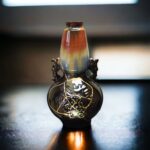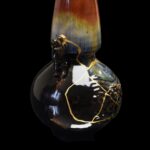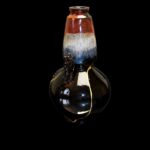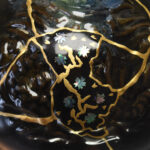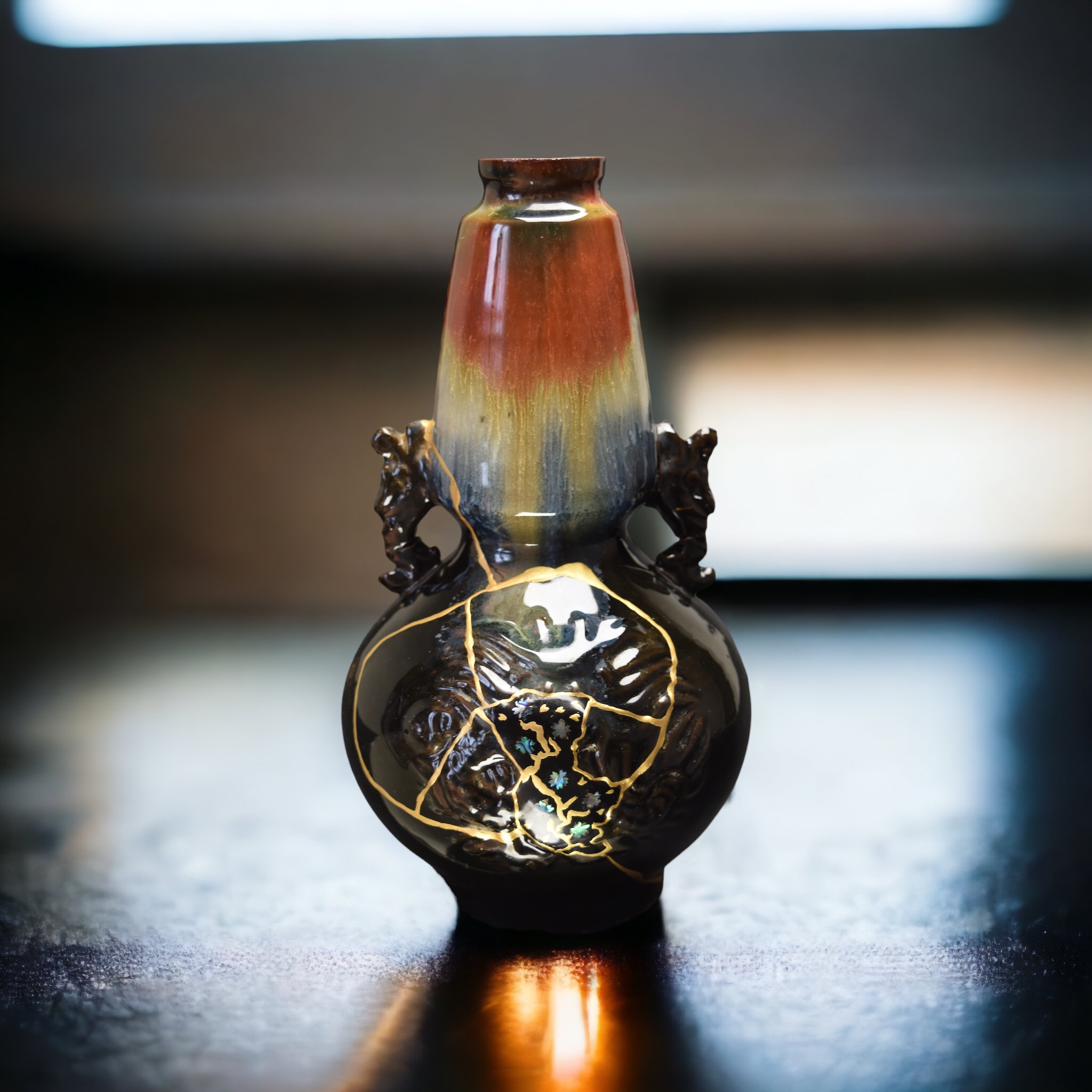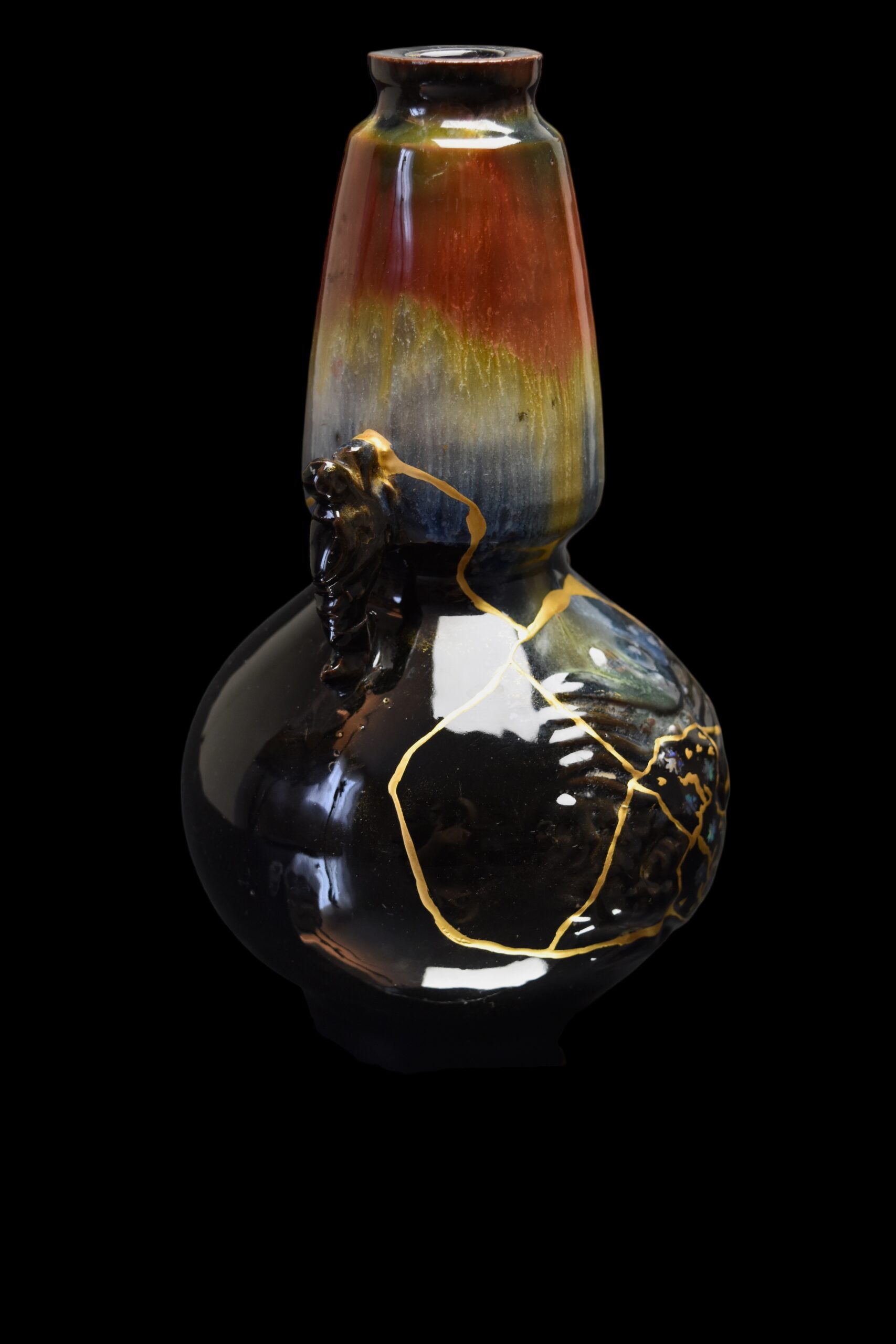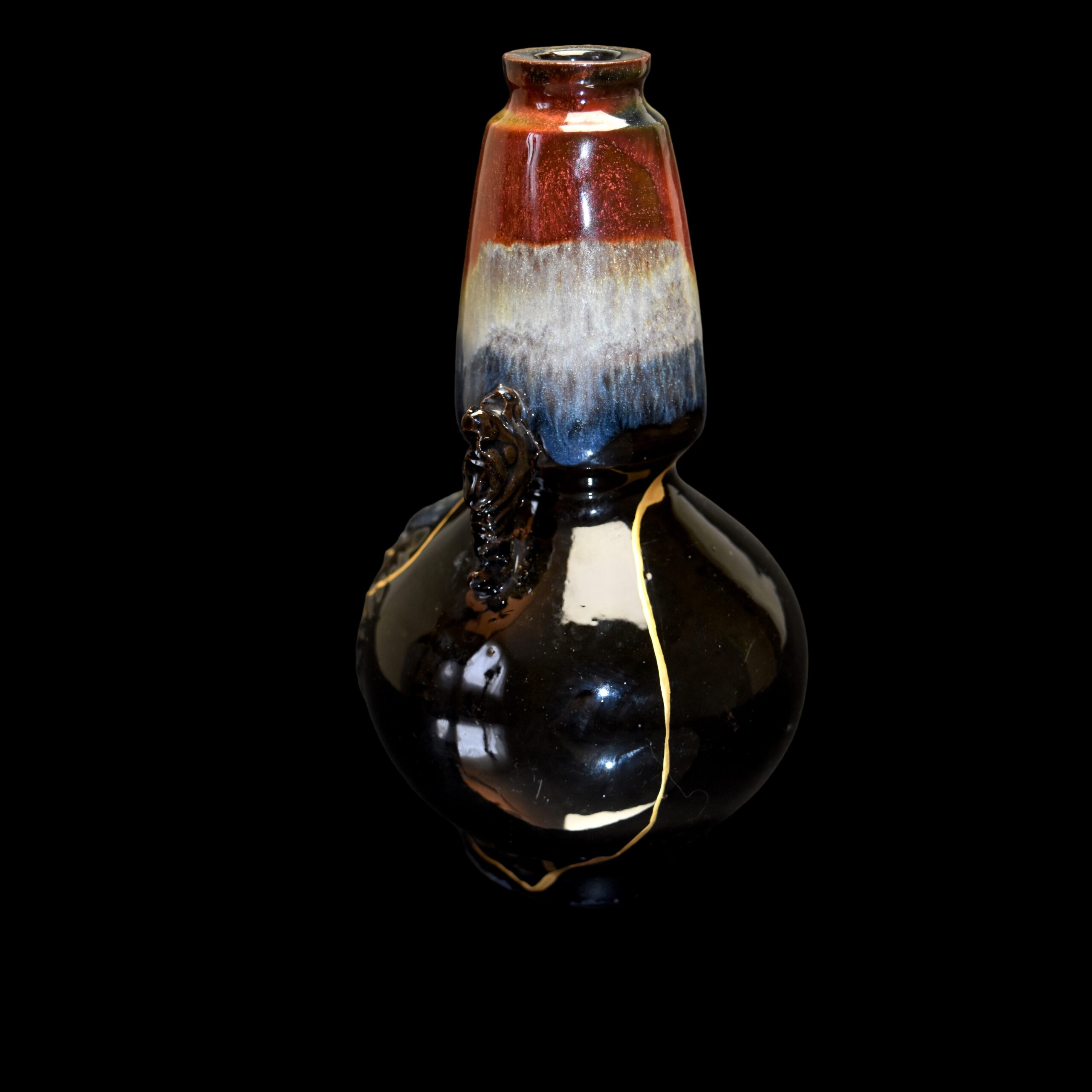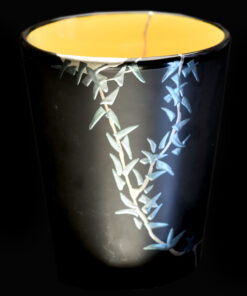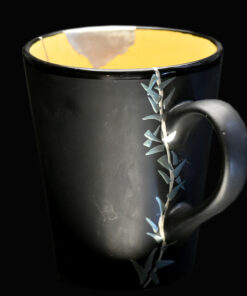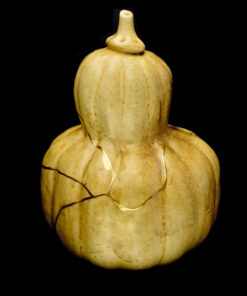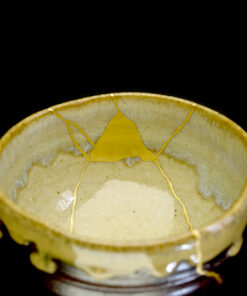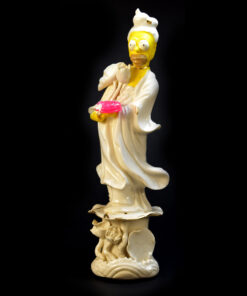Black vase with mop inlay
1 300 € VAT excl.
Out of stock
For express shipping please contact us before purchase as prices are difficult to calculate automatically on the website.
For this Kyoto porcelain vase, glazed in a warm palette from black to red, which was accidentally broken, I decided to use two especially difficult and delicate techniques in addition to 24-carat gold kintsugi: burgautage and maki-e.
The first term comes from burgau, the common name for many mother-of-pearl-producing shellfish. This is the mystery ingredient of this restoration: finely chiselled mother-of-pearl in the shape of tiny Japanese cherry blossoms, inlaid in natural black lacquer.
This traditional Japanese technique, known as Raden, requires meticulous, patient work: it involves a great deal of sanding and polishing, to achieve a perfectly smooth finish to the touch and a mirror-polished shine. With an added difficulty in the case of this piece: the surface is curved rather than flat, making inlaying all the more complex.
Maki-e means “sprinkled image” and is a traditional Japanese art form. Fresh lacquer is sprinkled with gold to create a luminous decoration. I used this technique to complete my decor by drawing cherry blossom petals and branches.
The result? A 21cm-high piece that has become absolutely unique. The alliance of two ancestral techniques and a noble-looking vase.
Extra info:
The mother-of-pearl used here is particularly precious: it comes from a very specific shell, the Turbo Marmoratus, famous for its many reflections ranging from green to fuchsia pink.
Click on “Further information” to find out more.
| Height | 21 cm / 8 inch |
|---|---|
| Certificate of Authenticity | Provided |
| Color | Black |
| Materials | 24 carats Gold, Mother of pearl, Porcelain, Urushi (Japanese lacquer) |
| Food Safe | Yes |
| Origin | Kyoto, Japan |
Related products
Masterpieces
Traditional Japanese Kintsugi

